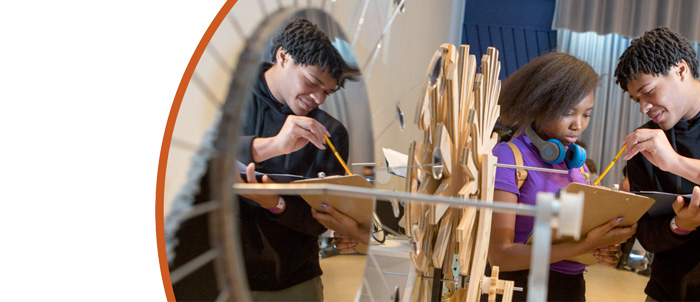Effective Strategies to Recruit Underserved Students to Baccalaureate Engineering Success and Transition Programs (Recruit-BEST)
Effective Years: 2023-2026
Baccalaureate Engineering student Success and Transition (BEST) programs are holistic student success programs at four-year undergraduate universities that provide evidence-based, well-structured activities to enhance engineering students' academic and professional success in the college transition and to increase their retention in the engineering major. These programs often struggle to attract diverse students, including women, students from underrepresented minority groups, first-generation students, low-income and rural students. This project aims to examine this issue by finding the most effective methods for reaching underserved students and recruiting them to BEST programs. The project seeks to identify strategies that are successful, impactful, and sustainable. This will strengthen BEST programs, allowing them to fulfill their goals and expand further. The project will contribute to our national understanding of efficient recruitment methods and effective communication channels. Additionally, it will promote diversity in engineering education and the workforce. By recruiting more engineering students from diverse backgrounds, we can address the nation's need for a diverse engineering workforce, which is critical for the advancement of society. By implementing strategic recruitment efforts, we can uplift underserved students, their families, and their communities, and these efforts have the potential to enhance the economic growth of rural areas.
The goal of this project is to build STEM education research skills in the PI through a project that broadens participation in engineering in the U.S. via assessing different strategies to recruit underserved students (women, minorities, first-generation, low-income, and rural students) into BEST programs at 4-year universities. The study is based on the Diffusion of Innovations framework and will examine students’ awareness of BEST programs and decision-making processes about whether or not to apply to these programs through surveys and interviews. Responses will be analyzed to study the effectiveness and alignment of different recruitment methods in use by BEST programs from the perspectives of both program organizers and students. The project is national in scope and aims to include 100 BEST programs across the U.S. and more than 2000 students via surveys and interviews with program leaders, and BEST program participants and prospective participants. Knowledge generated on effective recruitment strategies from this project will contribute to the literature base, broadening its impact and helping to tackle the challenges of low enrollment of underserved students in BEST programs, while supporting the creation and continuation of student success programs. This project also trains new STEM education researchers (PI and supported students) to enhance their capacity to conduct rigorous research in STEM education. The project is supported by NSF's EDU Core Research Building Capacity in STEM Education Research (ECR: BCSER) program, which is designed to build investigators' capacity to carry out high-quality STEM education research.
This award reflects NSF's statutory mission and has been deemed worthy of support through evaluation using the Foundation's intellectual merit and broader impacts review criteria.




